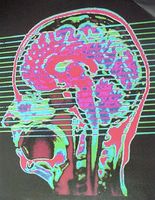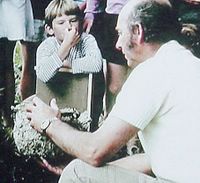
David Elkind's book

Now in its third edition David Elkinds book is worth a read.
Two basic metaphors have underpinned learning but now we have third. The first (and oldest) is the idea of the blank slate, or tabular rosa. This is the basis of our current industrialized mass education system, best seen in our secondary schools. This metaphor results in students gaining education from knowledgeable teachers in an assembly line factory schools, divided into forty minute periods, run by bells, books, tests and timetables. It is a ‘sit and git’ model – or ‘jug and mug’!
Much of the current school curriculum developments, imposed on schools, continues this metaphor with its obsession on educational measurement and the need to demonstrate the ‘added value’ the students have gained from their teachers.
The second metaphor is that of a growing plant. This is seen best in junior schools. This metaphor is based on providing a stimulating and supportive environment to encourage the learner to grow and to develop their gifts and talents appropriately.
The latest metaphor, and one with unhealthy consequences, is that of the ‘super kid’. This has resulted in what Elkind calls the ‘hurried child’. Arising out of an ideology of individualism and competition, this metaphor puts pressure on parents to hurry their children through childhood to give them an advantage in the future. It is an outcome of the ‘dog eat dog’, ‘me decades’, or the ‘yuppie me first’ culture!.
This hurrying is understandable in an age of increasing speed and insecurity and there is a growing industry ready to provide whatever any parents requires to give their child an academic advantage, non the least the computer industry! Parents often feel guilty if they aren’t providing all they can.
Unfortunately most of what is being provided goes against what we know as age appropriate learning. What young children want is not to grow up quickly but common sense parents with clear values who, care, love, understand and give their chidren their time.
Children, Elkind writes, need to learn self confidence, to be able to cooperate with others, require ‘normal’ competition, and most of all, time to do whatever they want to do the best they can. They need to value their spontaneity and be able to make age appropriate choices and not be forced to grow up to soon. They need to value their own creativity and expression and not be rushed into pseudo pre - school readiness activities. They need time to mess around, to explore their natural environment using their senses, to play imaginative games with others, to learn to think for themselves, and in the process, learn to appreciate their unique gifts and talents.
Rushing children, Elkind writes, leads to anxious and stressful children. Children can easy begin to blame themselves for their failure by not getting the 'right' answers. Trying to reach impossible expectations seems to realize its worst effect in the teenage years resulting in 'learned helplessness'. This is a term that expresses the feelings students have when they cannot meet what others indicate are necessary expectations. For such students school becomes ‘like a bad job’, resulting in depression and burnout. Free floating anxiety, aggression, withdrawal and uncertainty, and worse, are the prices to be paid for rushing.
In school rushing children leads to standardization, testing, uniformity and an unhealthy obsession with doing things right rather than experimenting. Social skills and creative arts suffer as schooling is increasingly focused on literacy and numeracy.
The key is to live well in the present and not be so concerned about rushing into the future. Parents should enjoy simple experiences with their children and schools, rather than rushing to cover everything, should stop and do fewer thing well.
Instead of rushing, Elkind says, children need to be nurtured in a relaxed environment which gives young people opportunities to make age appropriate choices and, through trial and error and sensitive adult help, grow in discernment. Freedom, responsibity and reasoning cannot be rushed and all grow from healthy relaxed trusting relationships.
Elkind writes. ‘The art of living is the most difficult task children have to learn.’ ‘It is the children’s right to be children, and to enjoy the pleasures and to suffer the pains of childhood that is infringed by hurrying. In the end, a childhood is the most basic right of children’
Where are people actually rushing too?
Are there aslo hurried teachers - trying to achieve impossible imposed expectations with equally stressful effects?
Quality if life is what it is all about.
Worth thinking about?
















